Rudy Morales BecerraStaff Sergeant170TH AHC, 52ND AVN BN, 17TH AVN GROUP, 1 AVN BDE Army of the United States 29 October 1950 - 13 November 1978 Richmond, Texas Panel 12W Line 037 |
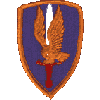


| |
 
|
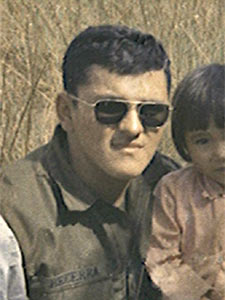
|
The database page for Rudy Morales Becerra
|
I am fortunate to have served with Rudy in the 170th Assault Helicopter Company. I was the crew chief of the Huey slick, tail number 68-15262, until January 1970 and Rudy was my gunner during October and November of 1969. Rudy was a great guy and a good friend. We had some fun times together. Rudy took over as crew chief of the 262 when my tour ended. For years I refused to accept that Rudy and the entire crew were lost. Rudy was such a nice guy. I believe he would have been wonderful husband, father, neighbor, and citizen. So many have been denied the opportunity to know Rudy over these past 37 years. I have the honor of having spent some memorable moments with him. May God's mercy embrace his soul.
From a friend - we served together in 1969, 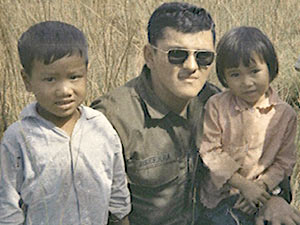
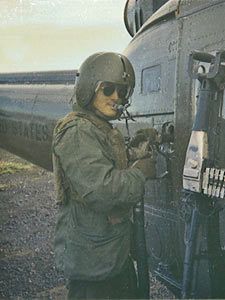
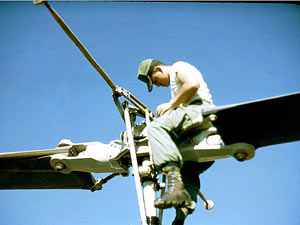
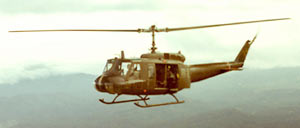
|
Notes from The Virtual WallOn March 24, 1970, helicopters from the 170th were sent to extract a Special Forces long-range reconnaissance patrol (LRRP) team which was in contact with the enemy about fourteen miles inside Cambodia in Ratanokiri Province. RED LEAD, one of two extraction helicopters, was commanded by James E. Lake. Captain Michael D. O'Donnell was the aircraft commander of one of the two cover aircraft (serial #68-15262, RED THREE). His crew consisted of WO John C. Hosken, copilot; SP4 Rudy M. Beccera, crew chief; and SP4 Berman Ganoe, gunner.The MACV-SOG team consisted of team leader 1LT Jerry L. Pool, US team members SSGT John A. Boronsky and SGT Gary A. Harned, and five indigenous team members. The team had been in contact with the enemy all night and had been running and ambushing, but the hunter team pursuing them was relentless and they were exhausted and couldn't continue to run much longer. When Lake and O'Donnell arrived at the team's location, there was no landing zone (LZ) nearby and they were unable to extract them immediately. The two helicopters waited in a high orbit over the area until the team could move to a more suitable extraction point. While the helicopters were waiting, they were in radio contact with the team. After about 45 minutes in orbit, Lake received word from LT Pool that the NVA hunter team was right behind them. RED LEAD and RED THREE made a quick trip to Dak To for refueling. RED THREE was left on station in case of an emergency. When Lake returned to the site, Pool came over the radio and said that if the team wasn't extracted then, it would be too late. Capt. O'Donnell evaluated the situation and decided to pick them up. He landed on the LZ and was on the ground for about 4 minutes, and then transmitted that he had the entire team of eight on board. The aircraft was beginning its ascent when it was hit by enemy fire, and an explosion in the aircraft was seen. The helicopter continued in flight for about 300 meters, then another explosion occurred causing the aircraft to crash in the jungle. The second explosion was followed by a yellow flash and a cloud of black smoke billowing from the jungle. A wingman made a high-speed pass over the site and came under fire, but made it away unscathed. Lake decided to go down and see if there was a way to get to the crash site. As he neared the ground, he was met with intense ground fire from the entire area. He could not see the crash site since it was under heavy tree cover. There was no place to land, and the ground fire was withering. He elected to return the extract team to Dak To before more aircraft were lost. The Army account concludes stating that O'Donnell's aircraft began to burn immediately upon impact. Aerial search and rescue efforts began immediately; however, no signs of life could be seen around the crash site. Because of the enemy situation, attempts to insert search teams into the area were futile. SAR efforts were discontinued on April 18. Search and rescue teams who surveyed the site reported that they did not hold much hope for survival for the men aboard, but lacking proof that they were dead, the Army declared all 7 missing in action.
From the
A full description of the action is on the The remains of the men lost in this crash were repatriated on 12 Apr 1995. DNA tests confirmed individual identification for four Americans - MAJ Michael O'Donnell, CWO John Hosken, SSGT Rudy Becerra, and SSGT Berman Ganoe, Jr. The three other Americans - CPT Jerry Poole, SFC John Boronski, and SFC Gary Harned - could not be individually identified; their presence aboard the helicopter and among the unidentifiable remains was based on circumstantial evidence. The recovery and identification of the remains was made pubic on 20 June 2001. |
|
The point-of-contact for this memorial is a friend - we served together in 1969, Ronald Sanders bluflt69ce@verizon.net |
|
Top of Page
www.VirtualWall.org Back to |
With all respect
Jim Schueckler, former CW2, US Army
Ken Davis, Commander, United States Navy (Ret)
Memorial first published on 24 Mar 2007
Last updated 11/14/2007